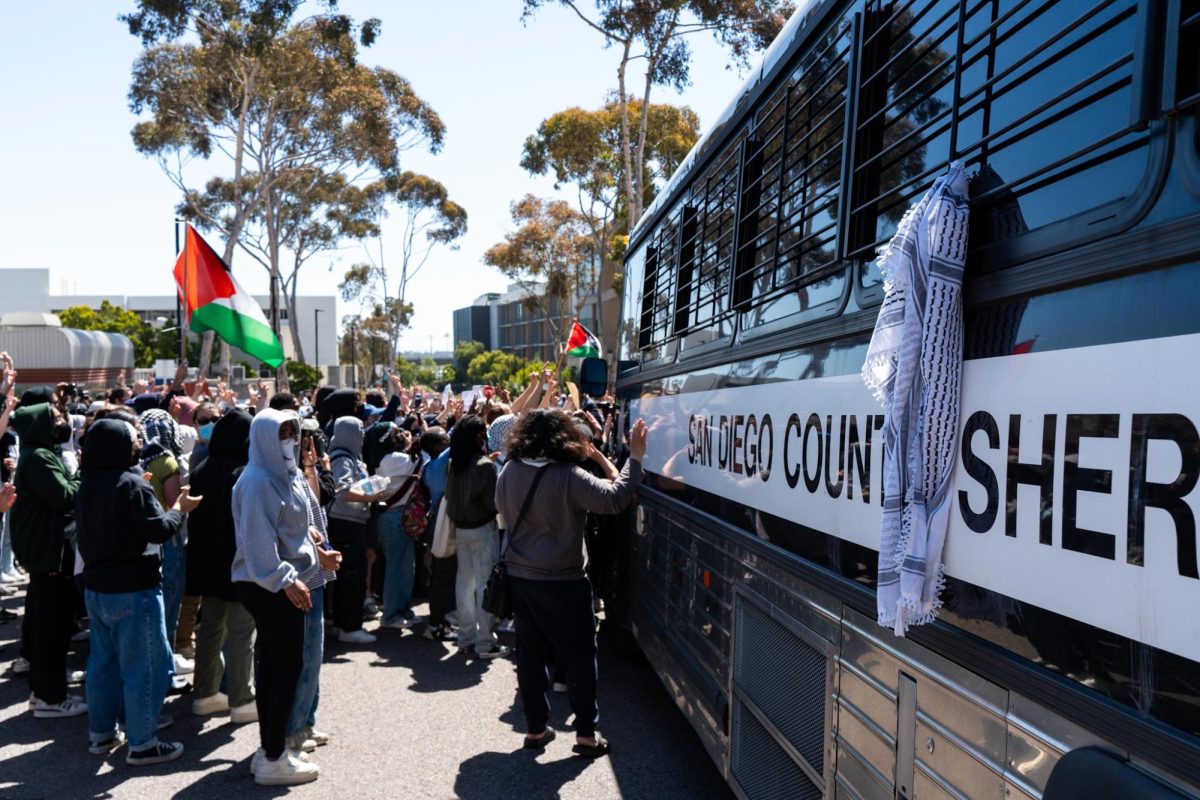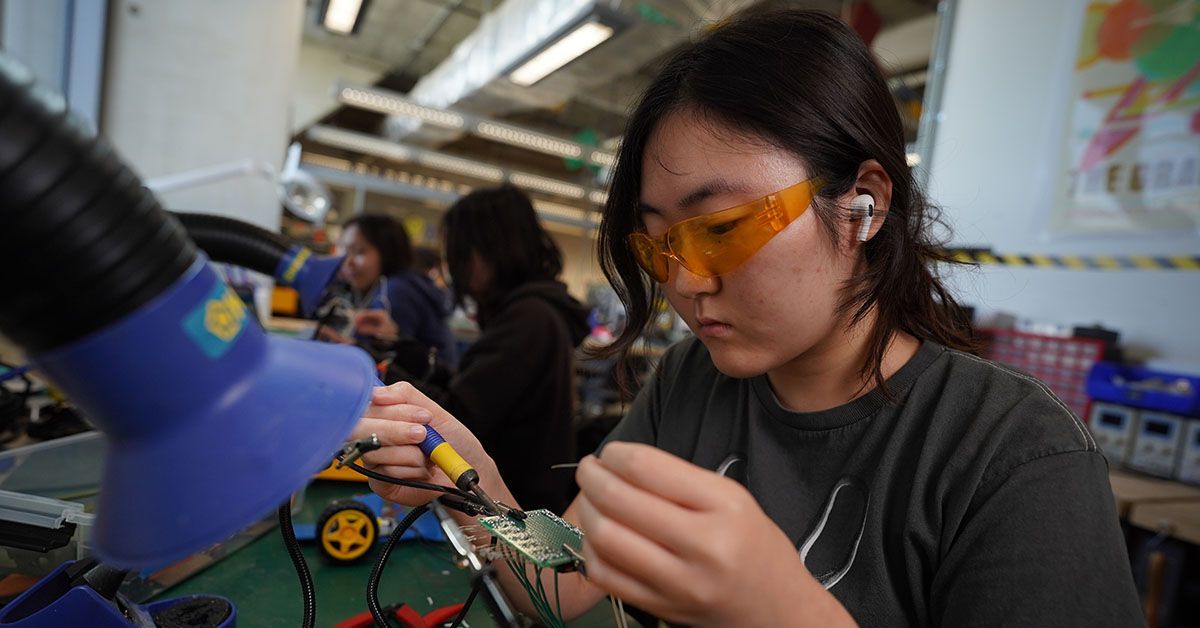This article was written in collaboration with Ella Chen, Editor-in-Chief of The Triton, and is a part of our news series on the COVID-19 pandemic. For information on how to prevent the spread of the virus, click here. This interview has been condensed and edited for clarity.
Throughout the COVID-19 pandemic, there has been a lot of misinformation floating around on social media. At the same time, most students have had their lives completely changed over the last month, with many unsure of what the future will hold and what they can do now to protect themselves.
In an effort to mitigate some of these anxieties, we joined The Triton to sit down with Dr. Robert Schooley, Chief of UC San Diego’s Division of Infectious Diseases, Dr. Stacie San Miguel, Director of Medical Services and Student Health Services, and Dr. Angela L. Scioscia, Interim Executive Director of Health & Wellness at UCSD, to have a conversation about the pandemic as well as to discuss ways for students to stay safe and promote wellness.
What symptoms are most commonly associated amongst young people with COVID-19?
Dr. San Miguel: [At UCSD], the majority of students that tested positive had fever, had a cough, and have felt fatigue. Some of them had a little bit of chest pain and shortness of breath. Some other symptoms that we’re also looking for are lack or loss of smell and loss to taste. Most of [the students] were very stable and most of them got better within a few days of being seen and they recovered very quickly.
Dr. Schooley: It’s not clear how the virus replicates, but there are several theories on it. One theory is that people who are younger make much more vigorous immune responses and contain viral replication better. And because the amount of viral replication correlates with how severe the disease is, people who are older are more likely to have a lot more viral replication [early on], which leads to more inflammation later, so they end up with more symptoms or are more likely to get sick. But younger people are more likely to spread the [disease] without realizing it. That’s why social distancing is very important for all of us.
What are some myths about the virus that you would like to dispel?
Dr. Scioscia: One thing we heard early on was that hand sanitizer doesn’t work. It does work, if you can get it you should get it. But washing your hands makes the difference. Hand sanitizer is an alternate when you don’t have soap and water next to you, so carry it with you.
Dr. Schooley: One myth is that “We know it’ll go away in the summer no matter what we do because it’s hot and dry.” We’re pretty sure that it’ll stick around if we don’t take advantage of what we already have learned about giving the virus no place to go by social-distancing. Our goal if we get infected is to make sure that the virus doesn’t get to anybody else. Everytime the virus infects someone and doesn’t go forward, it’s a dead end. We want every infection to be a dead end, and the way to do that is with social-distancing.
How has the University been responding to students who may be infected?
Dr. Scioscia: Students have tested positive on our campus and done well [with treatment]. We ask students with symptoms to call the nurse’s hotline so that we are ready to receive them. Most of [the students] end up not testing positive. We do have a few who are living in the isolation system on campus. We realized most students live in communal living with shared bathrooms. If someone has COVID-19, and it doesn’t matter how many symptoms they have, we prefer they have their own bathroom. We’ve created an area where we provide students with some extra space so they have a private bedroom and bathroom setting. We also want them to stay in that space, because they should not be leaving that environment. Food should be delivered to them, so we’re making sure that students are getting those resources.
The [Counseling and Psychological Services] team is also on-site for mental health support. CAPS has switched to providing healthcare remotely, but the central office and urgent care are still open.
Dr. San Miguel: In terms of the clinic, things have been pretty quiet. Our staff is down to 40 percent and non-patient care staff are working from home. When people come in, we triage them at the front desk before letting them into the building, and we give masks to all patients in the facility. Those with symptoms go through a specific entrance. We’re still doing women’s health, sports medicine, and urgent care, but student health does provide video meetings now. So if students are living at home, they can actually schedule an appointment with a provider here on campus if they have an established physician here. Our pharmacy is working hard to deliver medication to students. We have also been making medications available through Fedex, but for now delivery is only within California.
What research is the university currently undertaking to address COVID-19?
Dr. Schooley: We are doing cutting-edge studies of drugs being used to treat people. There’s an antiviral drug called remdesivir that is being studied as the first line drug to treat this disease. Trials are going on downtown at the antiviral research center to see if it decreases symptoms. This study has about 700 people in it. UC San Diego has around 15-20 of those 700, and we expect some results within the next month. That study was actually the only one approved by the [National Institute of Health], and it was started here at UC San Diego within five days of its approval. We have been enrolling patients steadily and we hope that we can start to tell if this drug works or not. There are people who are studying characteristics of the response to the virus, response from antibodies or killer T-cells, [and] which of those are correlated with the best recovery. We want to induce the best kind of immunity with vaccines, so that’s how we develop them.
For students who are anxious waiting at home and want to do more to help fight the pandemic, is there anything that you would recommend that they do to help with the cause?
Dr. San Miguel: On campus, our food pantry is still open, so they may want donations. Some of the students here on campus are also struggling. The other thing is, I know that our campus emergency operations center was taking donations of personal protective equipment from the community, so that could be another potential [way to help]. Just a story from here, we had received a donation from a painter of N95 masks, and I was able to give some to my neighbor who is a pediatrician who had no personal protection equipment. I think anything that people have would be greatly appreciated during this time.
What are the university’s plans for the future going into Fall Quarter 2020?
Dr. Schooley: We’ll have much better tools to monitor what’s going on than when things came up the first time. We’ll have antibody tests, we’ll have widespread availability of nasal swab testing for anybody who is symptomatic. We are working on a monitoring plan to detect the earliest cases on campus.
If things are quiet, we’ll welcome back everybody to campus that we can and have on campus teaching. We realize that some international students may not be able to get back, so there is a commitment to students who can’t get back to be able to still participate remotely. We plan to go on when it’s safe, and we plan on continuing to function as a university to provide education, research, and service to the community.
Graphic by Jacob Sutherland for The UCSD Guardian.














